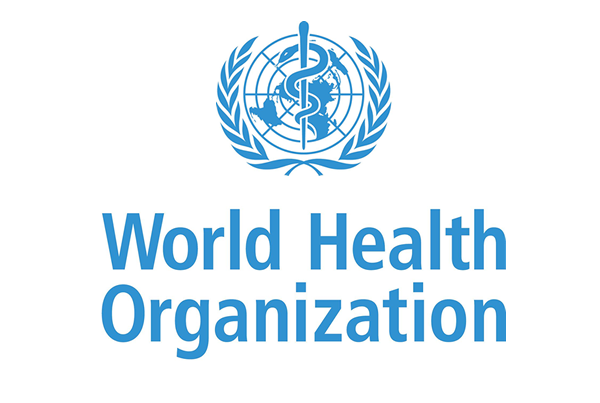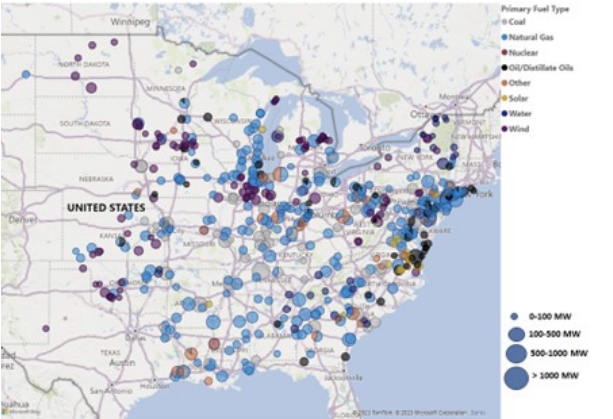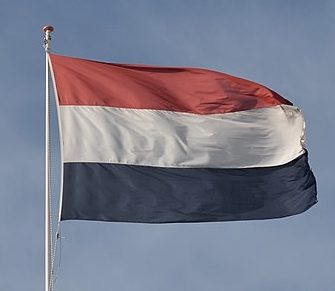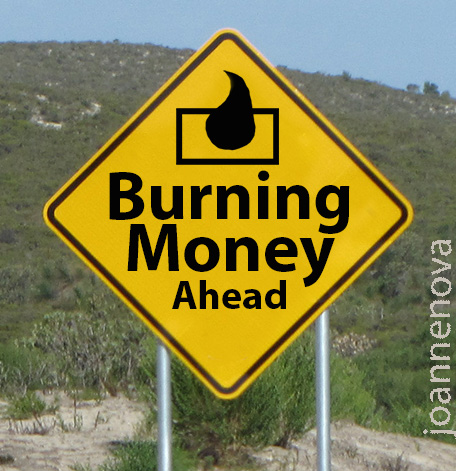|
|
UPDATE: I want to see an aurora, but living at 32S in Perth, Australia, this is like hoping to see the NorthernLights in Jerusalem or San Diego. No luck for me tonight, but there was one report from Geraldton 400km north of us (28.7S). Hopefully sometime in the next year during the solar max…
A quick note to say a CME just hit Earth, and some people may be able to see an aurora tonight that wouldn’t normally see one. A severe Kp 7 Geomagnetic storm is in progress (BOM estimate). Kp 7 is the bottom end of what is classed as a “severe” geomagnetic storm with Kp 8 and 9 being bigger (and even rarer).
Reports on X (Twitter): #AuroraAustralis #Auroraborealis
Southern Hemisphere data — BOM 3 day Geomagnetic Indices | Northern Hemisphere: SpaceWeatherLive
Spaceweather.com
Keep reading →
9.4 out of 10 based on 31 ratings
7.8 out of 10 based on 23 ratings

By Jo Nova
Add it to the list. A survey of owners of 330,000 vehicles found that EV’s experience 80% more problems than petrol and gas powered cars.
So EV’s cost more to fuel, take longer to arrive on long distance journeys. They sometimes burn down ships, destroy airport carparks, and kidnap drivers. They are a national security risk, and a burden on electrical grids. Because they are heavier they create more potholes, wear out tyres faster, increase road noise and air pollution (from tyre particles). They also increase wear and tear on bridges and multistory carparks.
EV’s are on the verge of becoming uninsurable partly because near new EV’s may have to be written off after a scratch, and all EV’s need large empty spaces to be stored so they don’t destroy the cars around them.
And in the end, they barely reduce national fuel consumption, and no one even knows if EV’s will reduce CO2 emissions.
By Tom Kriser, CBC News
Electric vehicles have proved far less reliable, on average, than gasoline-powered cars, trucks and SUVs, according to the latest survey by Consumer Reports, which found that EVs from the 2021 through 2023 model years encountered nearly 80 per cent more problems than did vehicles propelled by internal combustion engines.
Consumer Reports said EV owners most frequently reported troubles with battery and charging systems as well as flaws in how the vehicles’ body panels and interior parts fit together. The magazine and website noted that EV manufacturers are still learning to construct completely new power systems, and it suggested that as they do, the overall reliability of electric vehicles should improve.
Some problems are worse than others:
Keep reading →
9.6 out of 10 based on 106 ratings

By Jo Nova
Oh the irony — Green heat pumps and EV’s will need to be curtailed on a Green Grid
We’re watching the real time collapse of parts of the “Climate Industry” in on itself. The left eats its own. The EV’s and heat pumps the German government was coercing people to use are so incompatible with unreliable expensive energy, they will be among the first appliances to be restricted in the new clean green economy.
The truth is — Solar and wind power can’t power EV’s. In Germany the network regulator is working on ways to limit electricity to hungry EV’s and heat pumps so they don’t crash the grid.
The federal grid agency will throttle the charging power so EV’s will get just enough charge for a 50 kilometer trip from two hours of charging. Home owners will be offered a discount if they give control of their chargers to the government. Effectively the rich will charge their car or turn on their heater whenever they want. The poor will “save” €110 to €190 they never needed to spend with their old car or their old heater, and go withou electricity at peak times.
By Nikolaus J. Kurmayer | Euractiv.com
Germany’s residential grid operators will be empowered to restrict the flow of power to heat pumps and electric vehicle (EV) chargers from 2024 in order to preserve the stability of the grid, which is suffering from chronic underinvestment.
Did you see what they did there? Renewable energy requires a massive new infrastructure and network build to connect up low density energy collectors. Saying that the grid is suffering “chronic underinvestment” implies this new and unnecessary cost was somehow meant to have been built and paid for already. They blame the grid for not already solving the failures of wind and solar power.
This also applies to EV’s and heat pumps. It was obvious they would need more electricity, so this is a belated ploy to blame “investors” effectively for not building the coal and nuclear plants, they weren’t allowed to build, in order to keep the EV’s and heat pumps running…
Across Europe, investments into grids are lagging behind what’s needed as the continent embraces heat pumps and electric vehicles.
“Waiting time for permits for grid reinforcements are between 4-10 years, and 8-10 years for high voltages,” the European Commission said on Tuesday (28 November) as it unveiled a new Action Plan to accelerate the deployment of electricity grids.
“Grids need to be an enabler, not a bottleneck in the clean energy transition,” said Kadri Simson, the EU’s energy commissioner.
Blaming the grid is code for “blaming the taxpayer” for not already giving the Green industry all the things it needs so it can make a profit.
You will own nothing and feel grateful to get any electricity at all…

Australia, this is our future if we keep following Germany.
h/t NetZeroWatch
Floating rock house image by Reto Scheiwiller |
Frozen Jeep by (Joenomias) Menno de Jong
10 out of 10 based on 107 ratings
9.4 out of 10 based on 14 ratings

By Jo Nova
Something promising across the Tasman Sea
 The newly elected government in NZ is a three party coalition, promising tax cuts and less red tape. It’s barely been sworn in, yet somehow it already has the bright idea of checking whether deals with foreign conglomerate governments (like the UN) “pass the national interest test”. This is the same sort of test foreign conglomerate companies are also supposed to pass. The newly elected government in NZ is a three party coalition, promising tax cuts and less red tape. It’s barely been sworn in, yet somehow it already has the bright idea of checking whether deals with foreign conglomerate governments (like the UN) “pass the national interest test”. This is the same sort of test foreign conglomerate companies are also supposed to pass.
It sounds brilliant, but also like the bleeding obvious. This is what democratic governments are supposed to do, every deal and every day, right? Yet in 2023, it’s seems like such a radical right wing suggestion. So often our governments are serving someone else…
The conservatives have their sights set (justifiably) on the The UN’s Pandemic Preparedness Treaty. That’s due to be adopted in theory, next May. However The UN International Health Regulations is due to be sneakily accepted by default on Thursday. Hopefully the new NZ govt can fire off a quick letter to get NZ out of that tomorrow, making Australian and other global leaders look really silly (traitorously stupid) if they don’t. See James Roguski for more on that.
A new ‘national interest’ test will consider whether the Treaty limits government decision-making.
By Henry Jorn, The Epoch Times
The “national interest test” proposed by New Zealand’s newly formed coalition—including the National Party, ACT, and NZ First—will be applied before accepting any “agreements from the UN and its agencies that limit national decision-making and reconfirm that New Zealand’s domestic law holds primacy over any international agreements.”
The Pandemic Treaty is one example of a UN agreement.
In November 2021, New Zealand and other World Health Organisation (WHO) Member States agreed to establish an Intergovernmental Negotiating Body to draft a Pandemic Treaty.
However, following the conclusion of public submissions on the pandemic treaty on Aug. 11, 2022, a common theme ( pdf) was a concern that a new pandemic instrument would require “New Zealand to relinquish control of our domestic decision-making processes during a public health emergency of international concern (PHEIC) to the WHO, or otherwise reduce autonomy at the individual or country level.” Here in Australia, the Foreign Minister says the WHO will have no legal authority to force things on us. (It will only have the right to do sneakery, deception, graft and intimidation, with unbridled help from all our academics, media, and our retirement funds).
The Guardian is already campaigning against the new Luxon government, so we know it’s off to a good start.
There is hope.
hat tip to Mayday.
Image by Ondřej Šponiar
9.9 out of 10 based on 101 ratings
8.8 out of 10 based on 11 ratings

By Jo Nova
Our cities are more fragile than we imagine
During the winter storm called “Elliott” last Christmas, gas pipes came close to freezing in New York. The gas shortages are not just deadly themselves in cold weather, but more of the electrical network is dependent on gas now rather than coal, and therein lies double jeopardy. As the gas crisis escalated, so did the electrical one: at its worst there were “90,500 megawatts of coincident unplanned generation unit outages, derates and failures… “. This was on top of 37,000 megawatts of generation that was already out of service, so 127 gigawatts in toto*. Some 18% of the normal resources of the Eastern Interconnection was missing.
At 4:25am on Christmas Eve in North Eastern USA the grid frequency fell to 59.936 Hz, just below the trigger point of 59.95 Hz.
If the gas had stopped flowing completely during the big freeze that lasted five days, water pipes would have frozen, and not only would the water stop flowing out of taps, and toilets stop flushing, but pipes would have burst — rendering thousands of apartment blocks and offices unusable, and possibly water damaged too.
Somehow, like a disaster movie script — 8.5 million people in New York City would need to be evacuated in the midst of this frozen crisis. They’d need to live somewhere else, while the slow tedious work of repairing and rebuilding the system would take months. Gas networks are far slower to restore than electrical blackouts. Robert Boyce tells how in one gas crisis in Washington State, 35,000 customers lost gas and the gas-company had to send someone out to every customer, firstly to turn off the gas meters, and then later when the line was fixed, they had to send someone out to light the pilot lights on every property. Even with more than 1,000 people working on the problem it still took nearly a week to restore gas services.
In New York, Con Edison, the company that nearly lost the gas system, has 1.1 million customers.
Via SmallDeadAnimals
Last Christmas, the U.S. narrowly averted an energy disaster that would have decimated New York City and killed thousands
By Robert Bryce
In bone-dry language, the report “Inquiry into Bulk-Power System Operations During December 2022 Winter Storm Elliott,” explains how the gas pipeline network in New York nearly failed last Christmas when temperatures plummeted during the bomb cyclone. Freeze-related production declines, combined with soaring demand from power plants, homes, and businesses, led to shortages of gas throughout the Northeast. The lack of gas, as well as mechanical and electrical issues, resulted in an “unprecedented” loss of electric generation capacity totaling some 90,000 megawatts. While the lack of electricity was dangerous, the possibility of a loss of pressure in the natural gas network should send a bone-chilling shiver through the sacroiliac of every politician and bureaucrat in Washington, D.C., New York and the Northeast.
The report explains that if the gas pipeline system had failed, the recovery process in New York City would have taken “months.”
Hold your breath, this is not a freak rare event. The FERC report states this was the fifth in the last 11 years in which cold weather outages “jeopardized grid reliability”.
The US has become very dependent on natural gas, but there are risks…
Over the last few decades the US energy networks have been transformed with cheap shale gas. But as Robert Boyce explains, gas is a “just in time” fuel, unlike coal which can be stored on site in quantities large enough to survive a short crisis, or uranium, which can run for a couple of years.
It appears policymakers have been numbed into complacency about large generation outages and near-catastrophic misses over the past decade that include events like Winter Storms Uri and Elliott. But this latest near-catastrophe must be put into context. As mentioned above, NERC and FERC have repeatedly warned that the electric grid has become too dependent on natural gas. I love natural gas. And the increased use of gas (at the expense of coal) in the power sector has helped the U.S. cut its carbon dioxide emissions more than any other country in the world. But unlike coal — and the enriched uranium that fuels a nuclear power plant— gas is a just-in-time fuel. That makes it vulnerable to disruptions in service. And if gas supplies run short, so will electricity supplies.
The Billionaire SuperClass is working to make everything worse:
In all, [Michael] Bloomberg has committed more than $1 billion to a group of radical NGOs — including the League of Conservation Voters, Sierra Club, Rocky Mountain Institute, and Earthjustice, all of which have operating budgets of more than $100 million per year — who are aiming to undermine the integrity, affordability, and resilience of our electric grid.
The punchline here is obvious: America’s critical energy networks are nearing catastrophic breaking points due to underinvestment in reliable sources of fuel and generation, and by that, I mean pipelines, nuclear plants, and coal- and gas-fired power plants.
The Eastern Interconnection is huge, and outages were rife:
 Figure 2: Location and Fuel Type of Unplanned Generation Outages and Derates During the Event (Bubble Size by MW for each Outage), as of December 24, 202 h/t AnotherIan
*Was (doh) megawatts typo. Apologies.
Image by ThankYouFantasyPictures
9.9 out of 10 based on 81 ratings
9.1 out of 10 based on 12 ratings
7.6 out of 10 based on 31 ratings
8.2 out of 10 based on 24 ratings
8.9 out of 10 based on 19 ratings
By Jo Nova
Everywhere there are free and fair elections and a politically biased media, people will be shocked.
What does “far right” even mean when it applies to a quarter of the population?
 . .. It means name-calling is embedded in our vocabulary. Geert Wilder’s party has won 37 seats in the Netherlands election with 24% of the vote — more than any other party. There are 150 seats in total in the Dutch Parliament, so it’s not clear what the final winning coalition will look like. What is clear is that environmentalists hate it:
by Ian Smith, EuroNews
Environmental groups have expressed shock and promised climate action in response to Dutch election results. Wednesday night saw the historic victory of the far right Party for Freedom (PVV).
“We are shocked,” Extinction Rebellion Netherlands says. “This outcome will likely mean a rollback of climate measures, new fossil investments, exclusion of marginalised groups, and more.”
If far-right applies to a quarter of the population, and the Greens appeal to a much smaller slice, it’s only fair they be called the extreme-left, yes?.
How many votes is it worth when a party is gifted a “label” by the media day in and day out. How many people would have voted for a “Centre Right” party who would not even consider “the far right”? It could be a 2 – 5% advantage right there.
Left leaning players cheat and deceive with language every day, and the Right let them get away with it.
We need to fight for our language, for consistent words.
So let’s mock the partisan reporters who keep calling the center Right, the far-right. “We know which way you vote”. Ask them to define their terms.
There’s a trend across Europe — Victor Orban (Hungary), Geiorgia Meloni (Italy), Sweden, Finland…
By Bruno Waterfield, The Australian
Once renowned for tolerance, stability, liberalism and its pro-European credentials, one of the EU’s wealthiest nations is now a seething hotbed of discontent.
If it were only the Netherlands that would be bad enough, but most of the discontents and political trends that have propelled Wilders to victory are writ large across the EU.
Congratulations to Geert Wilders and his team, and to Javier Milei who won 56% of the vote in Argentina this week too. In the latter’s case, he’s not just “far right” but fully anti-science, according to Nature — the science journal that appears to think science is defined by government funding, not by evidence.
Martín De Ambrosio & Fermín Koop, Nature
As part of his plan to address the country’s economic crisis, Javier Milei has promised to slash research funding and shut down key science agencies.
The result brings much uncertainty for Argentina’s science community. Milei and other members of his party, La Libertad Avanza (Liberty Advances), have pledged to shut down or possibly privatize the country’s main science agency, the National Scientific and Technical Research Council (CONICET), as well as to eliminate the ministries of health, science and the environment.
So 56% of Argentian voters are climate skeptics:
‘A massive setback’
Milei has also called climate change is a “socialist hoax”, comments that have stirred concern in the science community. “His position is typical of a denier,” says Matilde Rusticucci, an atmospheric scientist at the University of Buenos Aires
Good to know next time someone says a skeptic is unelectable.
–Flag photo: Dutchgamer(Yusuf Babayusuf)
10 out of 10 based on 126 ratings
9.5 out of 10 based on 19 ratings

By Jo Nova
The Australian Government is building magical weather machines with large amounts of our children’s money, and they won’t even tell us what it will cost. Dear Sir, we’re here to fix the car you didn’t know was broken, give us your wallet? We’ll just help ourselves to your cash and won’t tell you what this costs, OK? (It must cost a fortune, because if it were cheap we’d tell you).
The Labor government promised impossible Net Zero things, and 18 months later everyone knows it is impossible. Renewable investment has ground to a halt, people are not buying EV’s, farmers don’t want the transmission lines, coastal towns don’t want the wind towers, project costs are doubling and tripling, and Florence the borer is still stuck in a very short hole that is meant to be a long one.
Instead of backing away slowly, the Labor Party have gone full Santa-wish-fairy.
Just like that — the plan for 6 gigawatts of unreliable generators will become 7, wait, I mean, 32 gigawatts. Wow.
The Australian grid uses about 30 gigawatts of generation, and already has 65 gigawatts of equipment to generate that. It took three generations to build and pay off, but we’re adding 32 GW this decade….
Geoff Chambers, The Australian
Taxpayers will underwrite a five-fold increase in new government-backed renewables capacity across Australia, as Chris Bowen gambles on a dramatic market intervention to secure grid reliability and achieve Labor’s ambitious target of 82 per cent renewables by 2030.
If the market won’t build crazy loss-making unreliable generation machines, the government will.
They force us to pay, but they can’t even tell us what it costs:
The program will be expanded from its initial mandate to underwrite 6 gigawatts of renewable energy projects to 32GW, with the cost to taxpayers being kept secret under commercial-in-confidence provisions.
And before you object to whale-killing, wedgetail-eagle-whacking and mowing down of forests, we’ll just clear out red tape for massive industrial projects:
Mr Bowen will also strike deals with states and territories to fast-track major renewables projects.
Is this the part where the Greens realize what a monster they have created?
All this money, so they can impress their friends with private jets at the UN:
Ahead of attending the United Nations Climate Change Conference in Dubai, Mr Bowen said the government was taking unprecedented action on renewables to avoid blackouts and energy price rises as coal generators shut down.
The new scheme is called the Capacity Investment Scheme. The government is now your financial advisor, and they are picking winners. Be afraid.
Image by Franz Bachinger from Pixabay
9.9 out of 10 based on 136 ratings
9 out of 10 based on 13 ratings
By Jo Nova
The thrill of EV ownership in Australia has worn off before it even started
In news that will shock no one, except the Minister for Weather himself, Labor’s plan to have nine out ten new car drivers in an electric vehicle by 2030 has crashed into a mountain of apathy. The latest estimates from the Australian department in charge of guessing these things is that EVs will only be 27% of new car sales by then, not 89%. And the modeling assumes EV’s will be exempt from the usual tariffs and taxes, but finds most Australians would rather pay the extra taxes and get themselves a planet-wrecking petrol-head machine anyway.
Of course, in climate maths, 27% is practically the same as 89% because EV’s may not reduce emissions at all, but since the push to force them on us has nothing to do with carbon emissions, the theatrical chasm in their big plans is a major loss.
That and the dilemma of who will pay for the back up batteries to stabilize the windy wobbly national grid if car owners don’t?
By 2030, after years of propaganda and coercion, electric cars are only expected to be 5% of the national fleet of small vehicles.
Of the developed world, Australia is possibly the stupidest country to own an EV in
With the lowest population density, longest hottest roads, and soon to be most unreliable expensive power, there’s a reason Australians have been slow to buy expensive, short range, inflammable machines.
In The Daily Mail today we hear that Belinda Cleary drove a $90,000 EV from Sydney to Melbourne and it cost 30% more in fuel and took 25% longer than her petrol car. The round trip cost $210 in fuel instead of $140 in petrol. So you can pay more to pay more and go slower as well. What’s not to like?
Having wrecked Australia’s cheap energy grid by turning it into a giant cyclone-and-flood talisman, the irony is that electric cars can’t get cheap fuel anymore. The hapless Belinda needed to stop six times to refill on the 1,800 kilometer return trip, and spent three and a half hours enjoying the roadhouses of the Hume Highway. On the way home, someone walked near her car and accidentally spooked the charger into stopping, thus creating an unexpected delay. Oh the complexities of electrical ecology?
But on the bright side, the car didn’t kidnap her, and she points out that all the 350kW charging stations were working. If one had been on the fritz she couldn’t have made it to the next fast charger, so she would have had an instant holiday stopover in Tarcutta. The slow 50 kW chargers are so slow drivers need an overnight stay.
And of course this major highway is the busiest and most well serviced interstate route in Australia. Everywhere else is going to be worse.
9.9 out of 10 based on 141 ratings
10 out of 10 based on 8 ratings
By Jo Nova
 Word is spreading openly of the awful third quarter results in wind and solar power, and in EV’s. Morningstar noted some $14 billion dollars moved out of sustainability funds in the last quarter even before the dismal results were announced. This is only a small part of the $300 billion total, but it’s a big bad shift in momentum in a sector that is supposed to be going exponential and theoretically “the next big thing”. Word is spreading openly of the awful third quarter results in wind and solar power, and in EV’s. Morningstar noted some $14 billion dollars moved out of sustainability funds in the last quarter even before the dismal results were announced. This is only a small part of the $300 billion total, but it’s a big bad shift in momentum in a sector that is supposed to be going exponential and theoretically “the next big thing”.
Two years ago funds were tagging anything they could with Sustainability. But the term has become a dirty word, and so has ESG. Funds that were enthusiastically adding these green terms to their titles are now dropping them and backing away slowly…
With major daily business newspapers now reporting the bad news it’s hard to see what will stop the slide — only massive subsidies would do that (temporarily), but the US has already done that with the bizarrely named Inflation Reduction Act.
But make no mistake, there is a $300 billion industry begging for help and a lot of politicians who don’t want to admit their renewables push was an economic disaster. The German government has bailed out Siemens, and the UK government is throwing money at wind power to try to get investors back. It’s like communism by stealth. The government demands industries do magical things, then when they fail, it saves them, making industry increasingly serve governments instead of customers. But the money, or the system can’t go on forever…

By Shane Shifflett, Wall Street Journal
Wall Street rushed to embrace sustainable investing just a few years ago. Now it is quietly closing funds or scrubbing their names after disappointing returns that have investors cashing out billions.
The third quarter was the first time more sustainable funds liquidated or removed ESG criteria from their investment practices than were added, according to Morningstar. That is a reversal from not that long ago, when companies were rebranding faltering funds to cash in on the billions of dollars flowing into sustainable investment products.
At least five other funds also announced they would drop their ESG mandates this year, while another 32 sustainable funds will close, according to data compiled by Morningstar and The Wall Street Journal.
One venture capitalist says Net Zero policies are political pipedreams, and Venture Capitalists knew years ago that industries dependent on government handouts might collapse like Enron:

Henry Geraedts, Financial Post
As early as 2018, key industry executives warned that the renewables sector risked an Enron-style collapse because of its insatiable subsidy-dependence. That unwinding is now happening across the wind, solar and EV industries, and it’s driven by dynamics unlikely to be reversed.
As demand falters, skyrocketing costs are outstripping even massive subsidies.
Faced with crippling technical problems, growing warranty exposure and companies like Shell walking away from multi-billion-dollar projects, industry leaders Orsted, Vestas and Siemens Gamesa are in structural financial crisis, their shares down by 30 to 60 per cent. Siemens Energy’s recent request for a $16-billion bailout prompted BP’s head of renewable energy to say the industry was “broken.”
What we are witnessing are not bumps in the road to an inevitable clean energy transition but evidence of socio-economic realities unravelling the politics of net zero — including the fiction that we must urgently and radically re-engineer our societies to stop a supposed climate catastrophe that in fact isn’t.
Henry Geraedts worked in venture capital internationally. His PhD is in international political economy, with an interest in strategic aspects of energy and technology.

Three weeks ago the head of renewables for BP used the word “broken”:
Reuters, Nov 1
The offshore wind industry, one of the fastest growing energy sectors, has recently suffered a string of major setbacks due to equipment reliability issues, supply chain problems and sharp cost increases.
Anja-Isabel Dotzenrath, BP’s head of gas and low carbon, said that problems in the United States included permitting, the time lag between signing power purchase agreements and projects being built and a lack of inflationary adjustment mechanisms.
“Ultimately, offshore wind in the U.S. is fundamentally broken,” Dotzenrath told an FT Energy Transition conference in London.
The profit margins are so thin, and the approval process is so long and complex (because they use so much space), that inflation is eating their returns before they even start.
h/t Marcel, Willie Soon and NetZeroWatch.
10 out of 10 based on 101 ratings
8.7 out of 10 based on 11 ratings
|
JoNova A science presenter, writer, speaker & former TV host; author of The Skeptic's Handbook (over 200,000 copies distributed & available in 15 languages).

Jo appreciates your support to help her keep doing what she does. This blog is funded by donations. Thanks!


 Follow Jo's Tweets
Follow Jo's Tweets To report "lost" comments or defamatory and offensive remarks, email the moderators at: support.jonova AT proton.me
Statistics
The nerds have the numbers on precious metals investments on the ASX
|



























Recent Comments